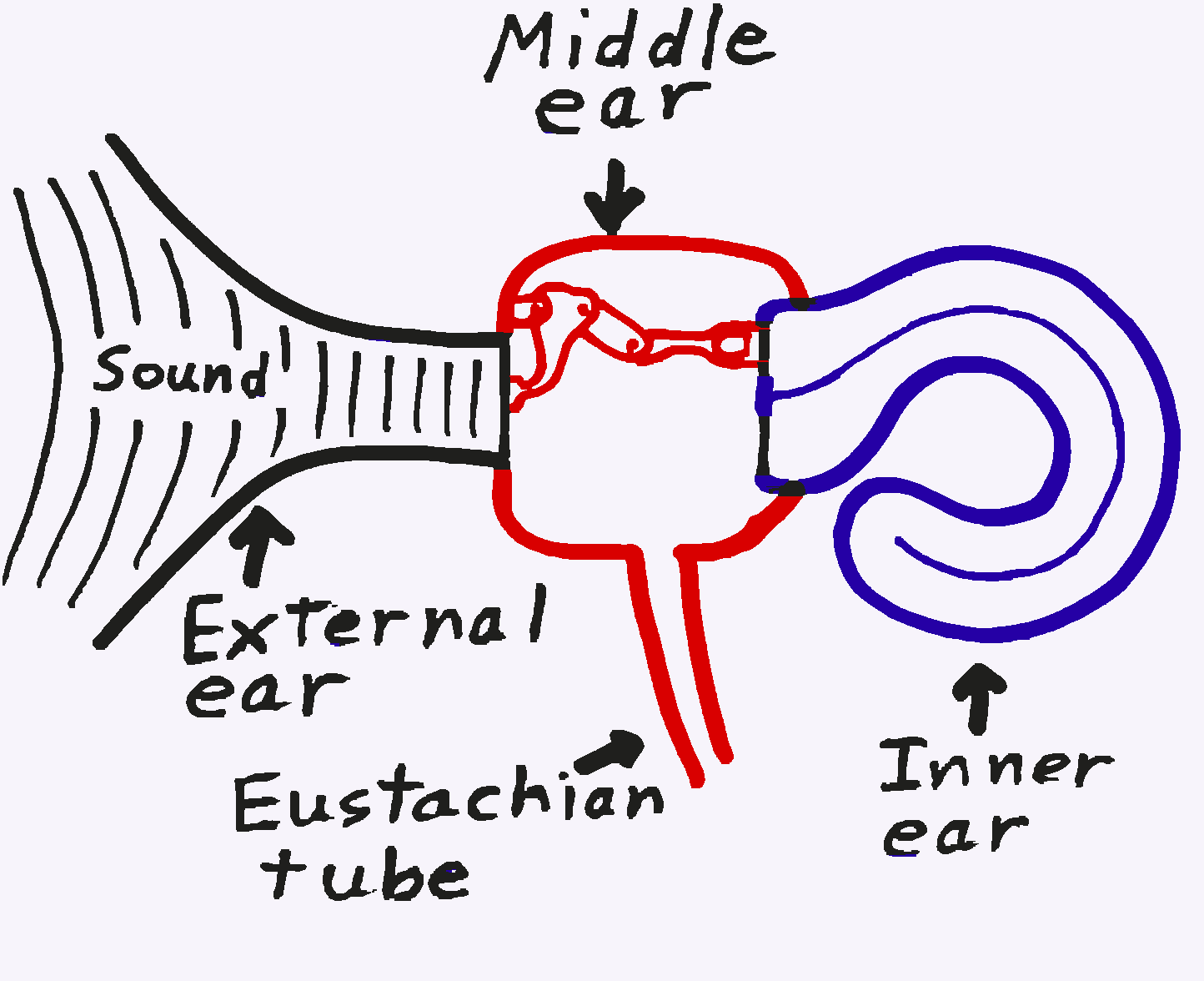|











| |
Hearing
Hearing is a mechanical sense. Vibrations of
air molecules are collected by the external ear, transmitted in the
middle ear and detected in the inner ear. Most ear structures are
within the temporal bones of the skull
 |
ear structure
|
 | The external ear consists of the
funnel-like pinna (ear flap), which collects the sound
waves, and the external auditory canal, which conducts the
sound waves in to the tympanic membrane (ear drum) which
vibrates.
|
 | The middle ear is an air-filled cavity
between the tympanic membrane and the inner ear. The vibrations of
the tympanic membrane are transmitted across the middle ear by
three tiny bones - the ossicles. The malleus
(hammer) is attached to the tympanic membrane, the incus
(anvil) is in the center and the stapes (stirrup) is in
contact with the cochlea in the inner ear. |
 |
|
 | The eustachian tube connects the middle
ear cavity with the pharynx. It allows equilibration of air
pressures on the 2 sides of the tympanic membrane.
|
 | The inner ear contains the receptors
for hearing in the fluid-filled, snail shell-shaped
cochlea. Vibrations of the ossicles cause movement of the
fluid in the cochlea which causes distortion of the hair-like
sensory microvilli in the organ of Corti - the sensory
structure that runs like a ribbon down the cochlea. Distortions of
the microvilli generate nerve impulses which are transmitted to
the brain and interpreted as sounds. |
|





